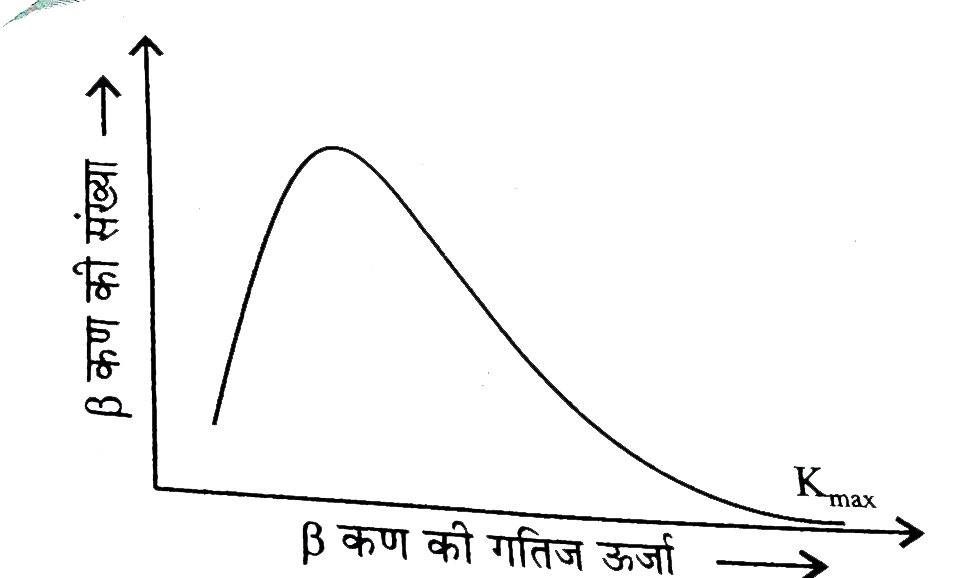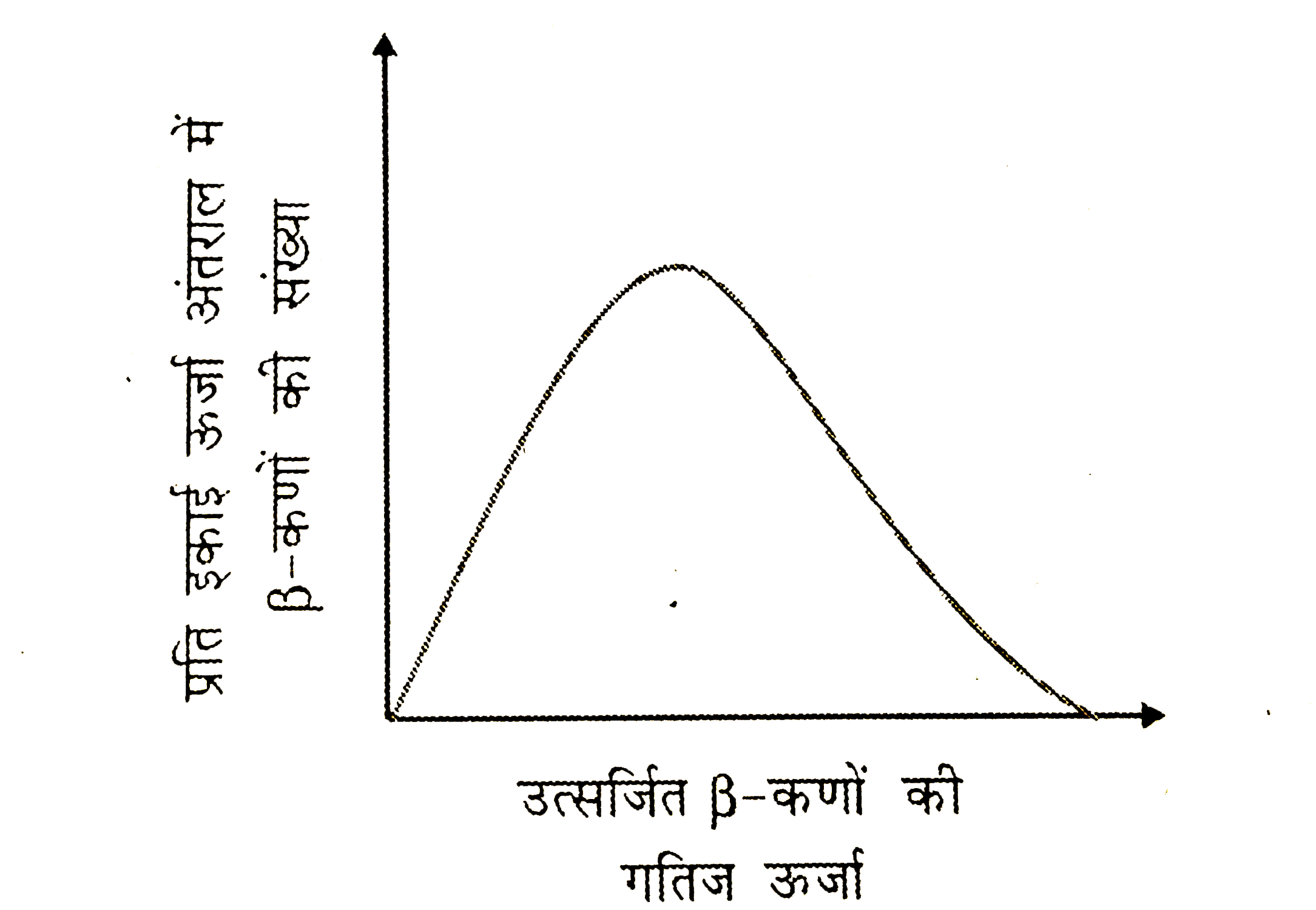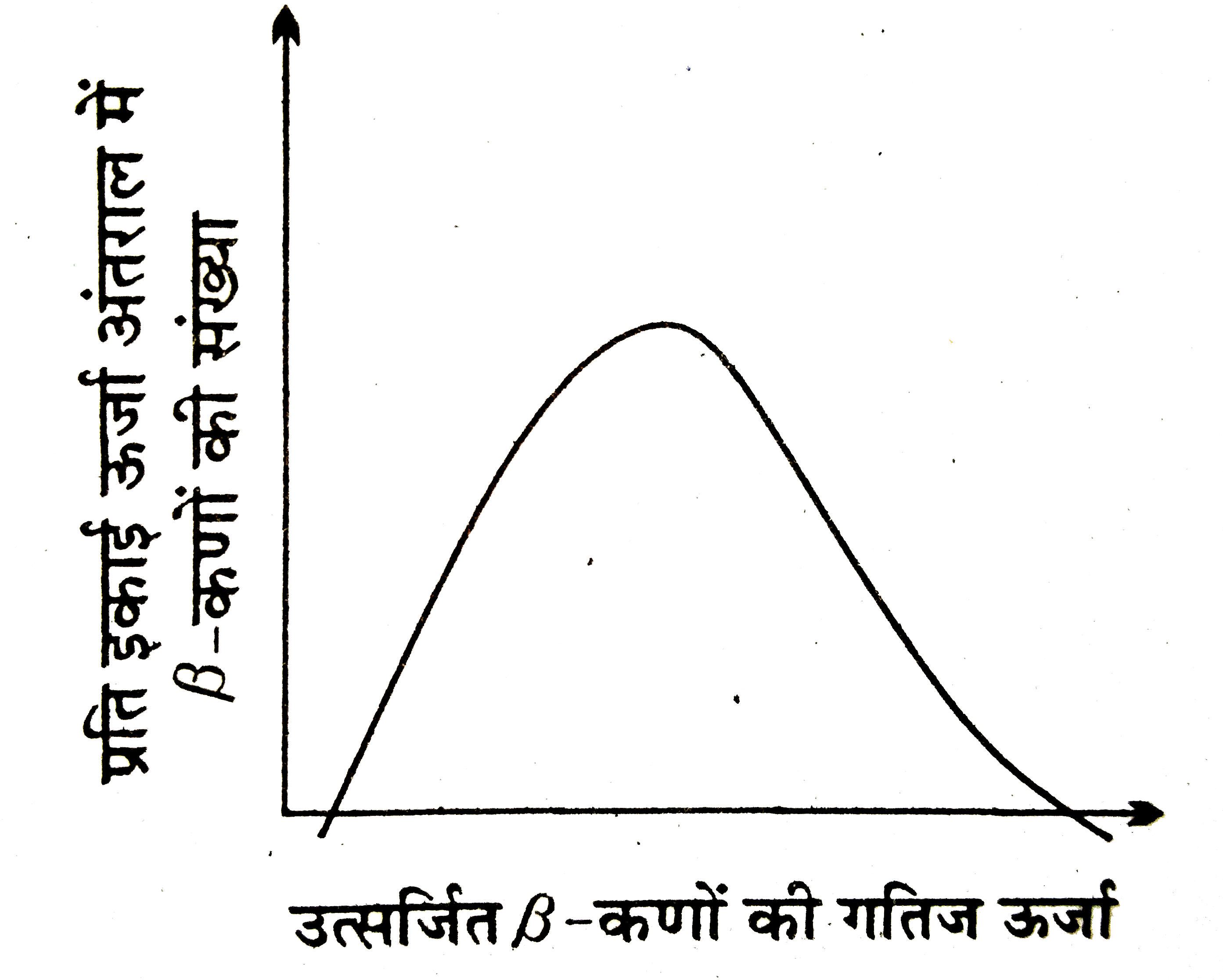(a) The observed decay products of a free neutron are a proton and an electron. The emitted electrons are found to have a continuous distribution of kinetic energy with a maximum of (mn−mp−me)c2. Explain clearly why the presence of a continuous distribution of energy is a pointer to the existence other unobserved products in the decay.
(b) If a neutron is unstable with a half life of about 917 seconds, why don't all the neutrons of a nucleus decay eventually into protons? How can a nucleus of Z protons and (A-Z) neutrons ever remains stable, if neutrons themselves are unstable?
(a) The decay of a free neutron at rest can be represented as .0n1→.1H1+.−1e0
According to the principle of conservation of linear moementum, the electron and proton will acquire equal and opposite momentum. This means the energy of electron in the above decay is fixed in terms of the mass of the particles involved. Therefore, it is impossible for the electron in the above decay to have a continuous distribution of energy. However, if an additional particle were present, the available energy can be shared by the electron and the additional particle. This simple logic was among the several arguments which led Pauli to postulate the existance of the third particle unobserved till then in the phenomenon of β decay. The correct equation for β-decay is, therefore .0n1→.1H1+.−1e0+¯¯¯Ve
Where the symbole ¯¯¯Ve represented the new particle, called the (electron) antineutrino. It is neutral particle of negligible small rest mass and instrinsic spin =12(h/2π). It was extremely difficult to detect a neutrino because of its weak interaction with matter.
(b) A free neturon has rest mass greater than that of a proton. Thus β-decay is energetically allowed. But the β+ decay of a free proton is not allowed energetically i.e. .1H1→.0n1+.1e0+ve is not allowed in case of a free proton. But in a nucleus, individual neturons and protons are not free. That is why β+ decay of proton occurs side by side. The energy needed for this decay comes form the appropriate difference in binding energies of a proton and neutron in the nucleus. In a stable nucleus with Z protons and (A-Z) neutrons, the two reciprocal process (neutron decay and proton decay) are in dynamic equilibrium.
Topper's Solved these Questions
- ATOMS AND NUCLEIBOOK - PRADEEPCHAPTER - ATOMS AND NUCLEIEXERCISE - Value Based Questions 1
1 Videos
- ATOMS AND NUCLEIBOOK - PRADEEPCHAPTER - ATOMS AND NUCLEIEXERCISE - Value Based Questions 2
1 Videos
- ATOMS AND NUCLEIBOOK - PRADEEPCHAPTER - ATOMS AND NUCLEIEXERCISE - Higher order Thinking skills 7
1 Videos
- COMMUNICATION SYSTEMSBOOK - PRADEEPCHAPTER - COMMUNICATION SYSTEMSEXERCISE - MODEL TEST PAPER-2
9 Videos
Similar Questions
Nuclear fission is the phenomenon of splitting of a heavy nucleaus into two or more ligther nuclei. Nuclear fusion is the phenomenon of fusing two or more ligther nuclei to form a single heavy nucleus. In both these processes, certain mass (Δm) disappears, which appears in the form of nuclear energy, E=(Δm)c2. The release of energy is so sudden that it cannot be controlled. This causes havoc. Nuclear fission is the basis of the an atom bomb and nuclear fusion is the basis of a hydrogen bomb. A powerful device, called Nuclear Reactor has been developed, where in nuclear energy produced is utilised for constructive purposes.
(i) How much energy is released in the fission of one nucleus of U(235) and in how much time?
(ii) Give an estimate of devastation potential of an atomic explosion.
(iii) Should we ban nuclear research in this field ? Give your views briefly.
View SolutionA nuclear reactor is a powerful device, wherein nuclear energy is utilised for peaceful purpose. It is based upon controlled nuclear chain rection. The nuclear reaction is controlled by the use of control rods (of boron or cadmium) and moderators like heavy water, graphite, etc. The whole reactor is protect with concrete walls 2 to 2.5 meter thick, so that radiation emitted during nuclear reactions may not produce harmful effects. Read the above passage and answer the following questions:
(i) Give any two merits of nuclear reactors.
(ii) What is radiactive waste?
(iii) why do people often oppose the location site of a nuclear reactor? What do you suggest?
View SolutionThe half-lives of radioactive nuclides that emit α-rays very form microsecond to billion years. What is the reason for this large variation in the life of alpha emitters?
View SolutionA galvanometer of resistance G is converted into a voltmenter to measrue upto V volts by connecting a resistance R1 in series with the coil. If a resistance R2 is connected series with it, then it can measure upto 1//2 volts. Find the resistance, in terms of R1 and R2, required to be connected to convert in into a voltmeter that can read upto 2V. Also find the resistance G of the galvanometer in terms of R1 and R2
View SolutionA free neutron decays into a proton, an electron and
View SolutionThe beta -decay process, discovered around 1900 , is basically the decay of a neutron (n) , In the laboratory, a proton (p) and an electron (e^(-)) are observed as the decay products of the neutron. Therefore, considering the decay of a neutron as a tro-body dcay process, it was observed that the electron kinetic energy has a continuous spectrum. Considering a three-body decay process i.e., n rarr p + e^(-)+overset(-)v_(e ) , around 1930 , Pauli explained the observed electron energy spectrum. Assuming the anti-neutrino (overset(-)V_(e )) to be massless and possessing negligible energy, and neutron to be at rest, momentum and energy conservation principles are applied. From this calculation, the maximum kinetic energy of the electron is 0.8xx10^(6)eV . The kinetic energy carried by the proton is only the recoil energy. What is the maximum energy of the anti-neutrino?
View SolutionThe beta -decay process, discovered around 1900 , is basically the decay of a neutron (n) , In the laboratory, a proton (p) and an electron (e^(-)) are observed as the decay products of the neutron. Therefore, considering the decay of a neutron as a tro-body dcay process, it was observed that the electron kinetic energy has a continuous spectrum. Considering a three-body decay process i.e., n rarr p + e^(-)+overset(-)v_(e ) , around 1930 , Pauli explained the observed electron energy spectrum. Assuming the anti-neutrino (overset(-)V_(e )) to be massless and possessing negligible energy, and neutron to be at rest, momentum and energy conservation principles are applied. From this calculation, the maximum kinetic energy of the electron is 0.8xx10^(6)eV . The kinetic energy carried by the proton is only the recoil energy. If the anti-neutrino has a mass of 3eV//c^(2) (where c is the speed of light) instead of zero mass, what should be the range of the kinetic energy, K of the electron?
View SolutionA free neutron at rest, decays into three particles: a proton, an electron and an anti neutrino. ._(0)^(1)nrarr._(1)^(1)P+._(-1)^(0)e+vecv The rest masses are: m_(n)=939.5656 MeV//c^(2) m_(p)=938.2723 MeV//C^(2) m_(e)=0.5109 MeV//c^(2) In a particular decay, the antineutrino was found to have a total energy (including rest mass energy) of 0.0004 MeV and the momentum of proton was found to be equal to the momentum of electron. Find the kinetic energy of the electron.
View SolutionmP and mn are masses of proton and neutron respectively. An element of mass m has Z protons and N neutrons, then
View Solutionm_(p) and m_(n) are masses of proton and neutron respectively. An element of mass M has Z protons and N neutrons then
View Solutionβ क्षय में उत्सर्जित इलेक्ट्रॉनों में गतिज ऊर्जा वितरण को एक ग्राफ द्वारा प्रदर्शित कीजिए। यह ऊर्जा स्पेक्ट्रम अविरत होता है क्यों?

View Solutionविरामावस्था में किसी मुख्य न्यूट्रॉन के क्षय पर विचार कीजिए n→p+e−
प्रदर्शित कीजिए की इस प्रकार के द्विपिंड क्षय से नियत ऊर्जा का कोई इलेक्ट्रॉन अवश्य उत्सर्जित होना चाहिए , और इसलिए यह किसी न्यूट्रॉन या किसी नाभिक के - क्षय में प्रेक्षित सतत ऊर्जा वितरण का स्पष्टीकरण नहीं दे सकता (चित्र 6.19).

View Solutionविरामावस्था में किसी मुक्त न्यूट्रॉन के क्षय पर विचार कीजिए - n→p+e−
प्रदर्शित कीजिए कि इस प्रकार के द्विपिंड क्षय से नियत ऊर्जा का कोई इलेक्ट्रॉन अवश्य उत्सर्जित होना चाहिए और इसलिए यह किसी न्यूट्रॉन या किसी नाभिक के β− क्षय में प्रेक्षित सतत ऊर्जा वितरण का स्पष्टीकरण नहीं दे सकता ।

View SolutionA free neutron decays into a proton, an electron and
View Solution1900 के आसपास हुई खोज के अनुसार β-क्षय प्रक्रम वास्तव में न्यूट्रॉन (n) का क्षय होता है। प्रयोगशाला में पाया गया है कि न्यूट्रॉन के क्षय होने पर एक प्रोटोन (p) तथा एक इलेक्ट्रॉन (e−) जनित होते है। इसलिये, न्यूट्रॉन क्षय को द्वि-पिंडी क्षय-प्रकम मानकर, सैद्धांतिक गणना से यह सिद्ध किया गया कि इलेक्ट्रान की गतिज ऊर्जा का मान स्थिर रहना चाहिये। लेकिन प्रयोगों ने दिखाया कि इलेक्ट्रॉन की गतिज ऊर्जा के मान का संतत स्पेक्ट्रम होता है। त्रि-पिंडी क्षय प्रक्रम मानकर, अर्थात n→p+e−+→ve, 1930 के आसपास Pauli ने इलेक्ट्रान का देखा गया ऊर्जा स्पेक्ट्रम समझाया। प्रति-न्यूट्रिनों (→ve) को द्रव्यमान-रहित व नगण्य ऊर्जा का मान कर और न्यूट्रान को स्थिर मान कर, संवेग व ऊर्जा संरक्षण के नियम गणना में लगाये गये जिससे इलेक्ट्रॉन की अधिकतम गतिज ऊर्जा को 0.8×106eV आंका गया। प्रोटान की गतिज ऊर्जा केवल प्रतिक्षेप ऊर्जा है।
प्रति-न्यूट्रिनों की अधिकतम ऊर्जा है।
View Solution
